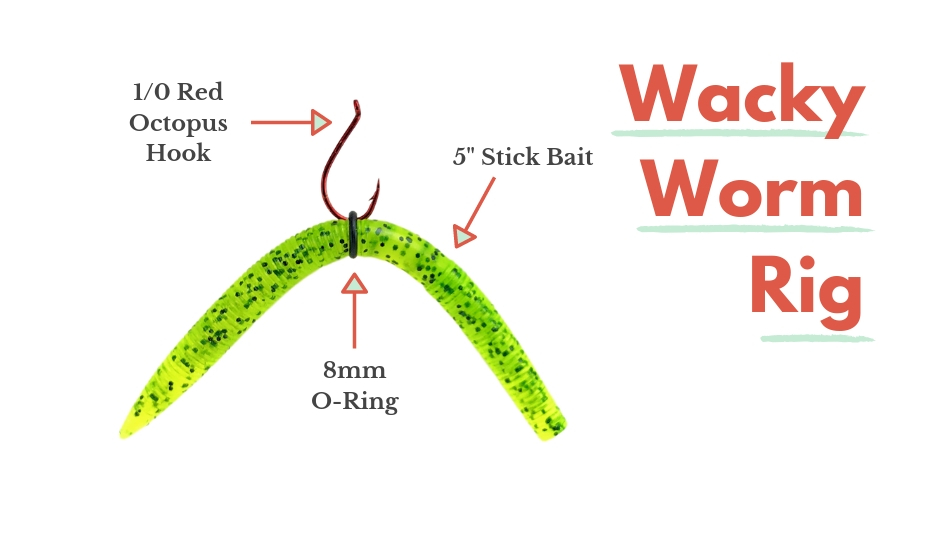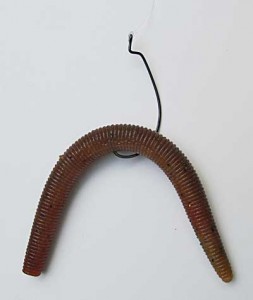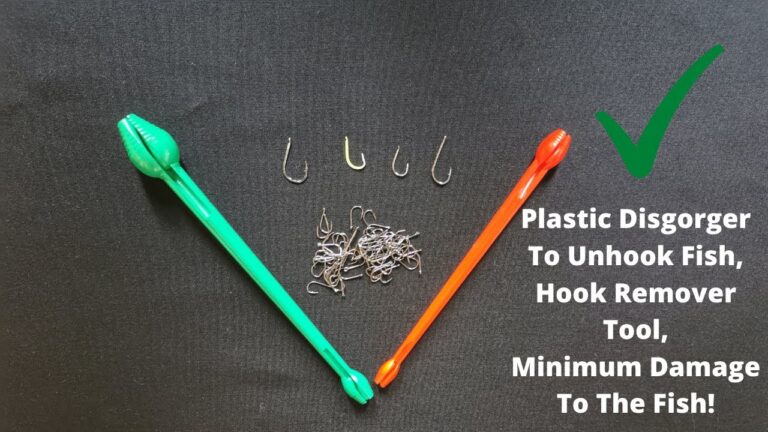How to Hook a Wacky Worm

To hook a wacky worm, thread the hook through the worm’s midsection. Ensure the hook’s point is free for effective hooksets.
Mastering the art of fishing with a wacky worm can significantly enhance your angling success. The technique’s simplicity and effectiveness attract both novice and seasoned fishermen. The wacky rig, distinguished by its unique hook placement, provides a natural, enticing fall of the worm that mimics vulnerable prey.
As the bait sinks, its undulating motion on a weightless hook triggers strikes from even the most lethargic bass. This method shines in finesse fishing situations, where a subtle presentation is key to tempting discerning fish. It’s a versatile approach, suitable for various water conditions and capable of coaxing bites when other methods fall short. Embracing this rigging style promises a rewarding experience on the water, combining ease of use with a high potential for landing impressive catches.

Credit: tailoredtackle.com
An Introduction To Wacky Worm Fishing
Bass fishing thrills anglers with the chase for the elusive fish. Enter the wacky worm – a go-to for any tackle box. This simple, yet effective, lure mimics vulnerable prey. As it twitches through the water, bass can’t resist the urge to strike. Infuse variety in your box with these worms. Opt for multiple colors and sizes. Match your selection to the water you’re fishing. Dark, murky water? Go bright or neon. Clear water asks for more natural hues. Let’s not forget to rig them right. The unique ‘wacky’ style needs proper technique. Center your hook on the worm for that irresistible, floppy movement. Ready your tackle box with these rubbery wrigglers. They promise adventure and perhaps, a prize bass.
Selecting The Perfect Wacky Worm
Selecting the perfect wacky worm for fishing excites many anglers. Different styles and features of worms impact your success. Soft plastic worms come in various lengths and thicknesses. Their flexibility often determines the bait’s natural movement in the water.
For color choices, consider the water conditions. Clear water calls for natural worm colors like green or brown. Murky waters make brighter colors like chartreuse more visible. Temperature affects fish behavior too. Use dark colors in cold water and lighter ones when it’s warm. Remember to match the worm color to the forage in the area.
Essential Gear For Wacky Rigging
Fishing enthusiasts need the right tools for wacky rigging. A balanced rod ensures precise wacky worm manipulation. Opt for a medium-light to medium action rod. It provides enough flexibility for the wacky worm to move naturally.
Your reel choice should pair well with the rod. Consider a spinning reel for easy line management. The spinning reel is user-friendly, perfect for those new to wacky rigging.
Line selection is crucial. Fluorocarbon lines, between 6-12 lb test, are ideal. They’re nearly invisible underwater and have the right strength. This won’t overpower the wacky worm, allowing it to perform the desired action.
Mastering The Hooking Technique
Mastering the hooking technique is crucial for successful wacky worm fishing. Anglers often focus on the core of wacky rigging, where the worm’s center is the target area. Let’s break down the steps to properly hook a wacky worm:
- Select the right hook – a size 1 or 2 works best.
- Find the center of the worm for even balance.
- Gently pierce the worm’s middle with the hook point.
- Make sure the hook sits parallel to the worm.
- Leave the hook point exposed for better hooksets.
Consistent practice turns beginners into pros. The simple steps above ensure your wacky worm hooks fish effectively. Remember, a properly rigged worm mimics natural movement in the water, tempting fish to bite.
Refining Your Rig: Advanced Setups
Mastering the Wacky Worm technique requires choosing the right rig setup. A weightless rig excels in shallow water, offering a natural, slow-falling presentation that’s irresistible to bass. Contrastingly, a weighted rig allows for a quicker sink rate, making it perfect for deeper waters.
Employing O-rings can greatly enhance the durability of your worm. It minimizes hook tears and lets you catch more fish per bait. Slide one O-ring over the worm or use two for an even stronger setup.

Credit: www.youtube.com
Casting And Retrieving Strategies
Mastering the art of casting a wacky worm is key to hooking that big catch. Start with choosing the right moment to cast. A good cast can make all the difference. Watch for water movement and fish behavior to time it perfectly.
Once in the water, focus on creating attractive retrieval patterns. Short, quick twitches of the rod tip can mimic live worms. This movement is irresistible to fish. The trick is to keep it unpredictable; vary the speed and intensity. Remember, the goal is to make the worm seem alive.
Troubleshooting Common Wacky Worm Challenges
Snags and tangles often frustrate anglers using wacky worms. Quick tips can help. Keep tension on the line to avoid loose loops. Cast away from thick weeds where hooks easily catch. Use a weeder hook to slide across vegetation smoothly.
Water conditions vary – so must your tactics. Clear, calm water needs a stealthy approach. Go for a lighter weight to aid in a gentle descent. Murky or choppy waters? Choose a brightly colored wacky worm to stand out. Adjust retrieval speed to match the water’s mood. Slow and steady often wins the underwater race.
Catch Stories And Angler Insights
Fishing enthusiasts often share thrilling tales of catches using wacky worms. One angler recalled a day memorable for a hefty bass, which struck just as the worm danced past a lily pad. The fight was fierce, but the satisfaction of victory was unparalleled. This successful catch became a story passed down in fishing circles, inspiring others to master the wacky worm technique.
Pro tips from seasoned anglers emphasize the importance of patience and observation. Observing the water’s surface and the fish’s behavior helps in making the right cast. Using a slow, steady retrieve can entice fish effectively, as sudden movements may scare them away. Practice makes perfect, and every cast is an opportunity to improve your skills.
| Angler Tip | Why It’s Useful |
|---|---|
| Observe before casting | Know where fish might bite |
| Pick the right color worm | Match the hatch for success |
| Be patient | Give fish time to find your lure |

Credit: officiallakeforktrophybass.com
Frequently Asked Questions Of How To Hook A Wacky Worm
What Is The Best Hook To Use For Wacky Worming?
The best hook for wacky worming is a thin wire, wide-gap hook, typically in sizes 1/0 to 4/0, ensuring effective hooksets and minimal damage to the worm.
How Do You Rig A Wacky Worm Without An O-ring?
To rig a wacky worm without an O-ring, insert the hook directly through the worm’s body at its midpoint. Ensure even placement for balanced action. Use a sharp, thin-wire hook to minimize damage and keep the worm’s action natural.
How Do You Rig A Trick Worm?
To rig a trick worm, thread it onto a hook nose-first for a Texas rig, or hook it through the middle for a wacky rig. Ensure the worm hangs straight to prevent line twists.
What Is The Best Rod For A Wacky Rig?
The best rod for a wacky rig is a medium-light to medium power, fast action spinning rod, ranging from 6’8″ to 7’2″ in length.
Conclusion
Mastering the art of wacky worm rigging enhances your bass fishing endeavors. Proper hook placement yields significant results—more strikes, more action. Embrace the techniques shared here; they set you apart on the water. Experiment with colors and conditions. Now go out, rig confidently, and enjoy the thrill of a well-hooked wacky worm.





